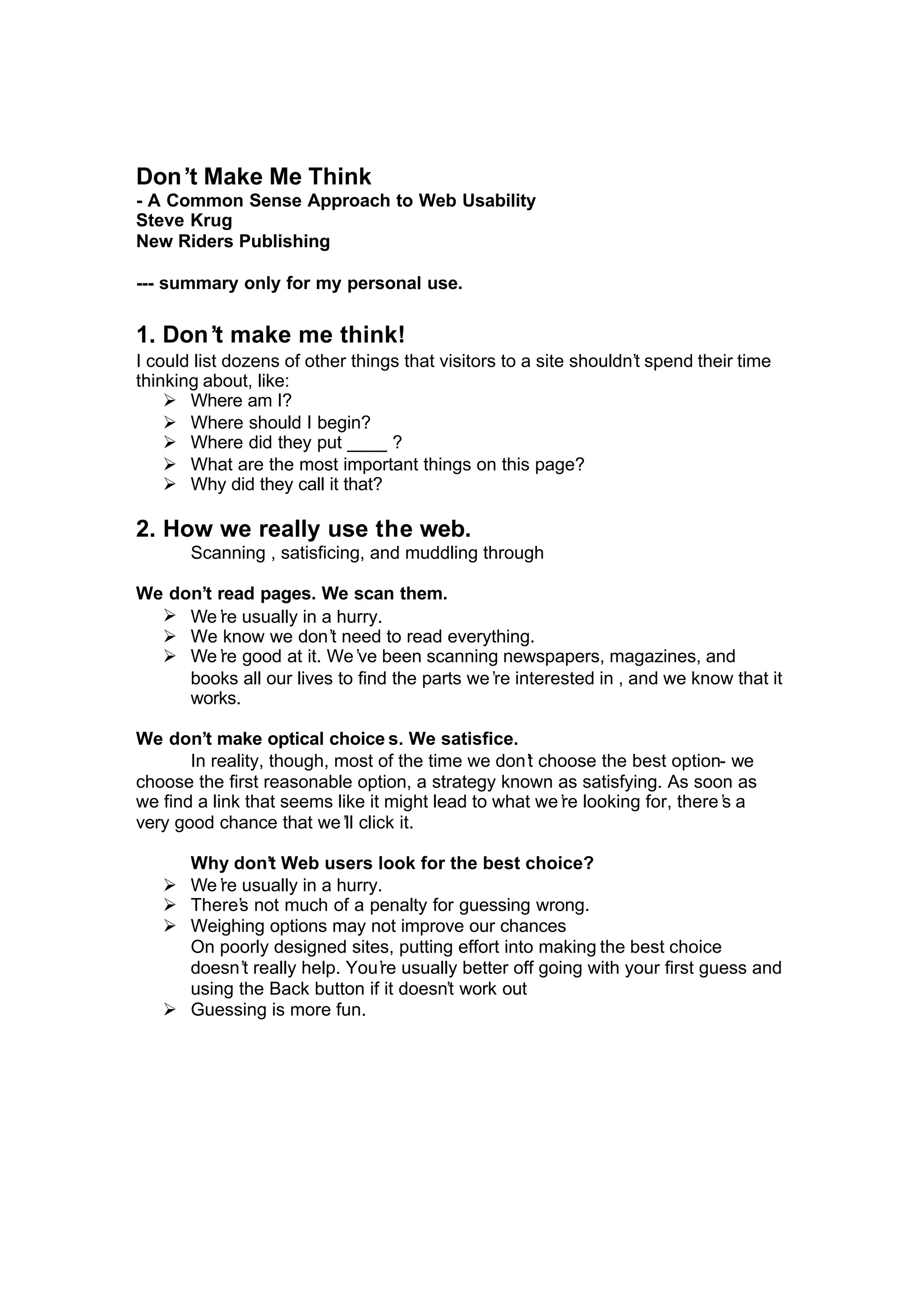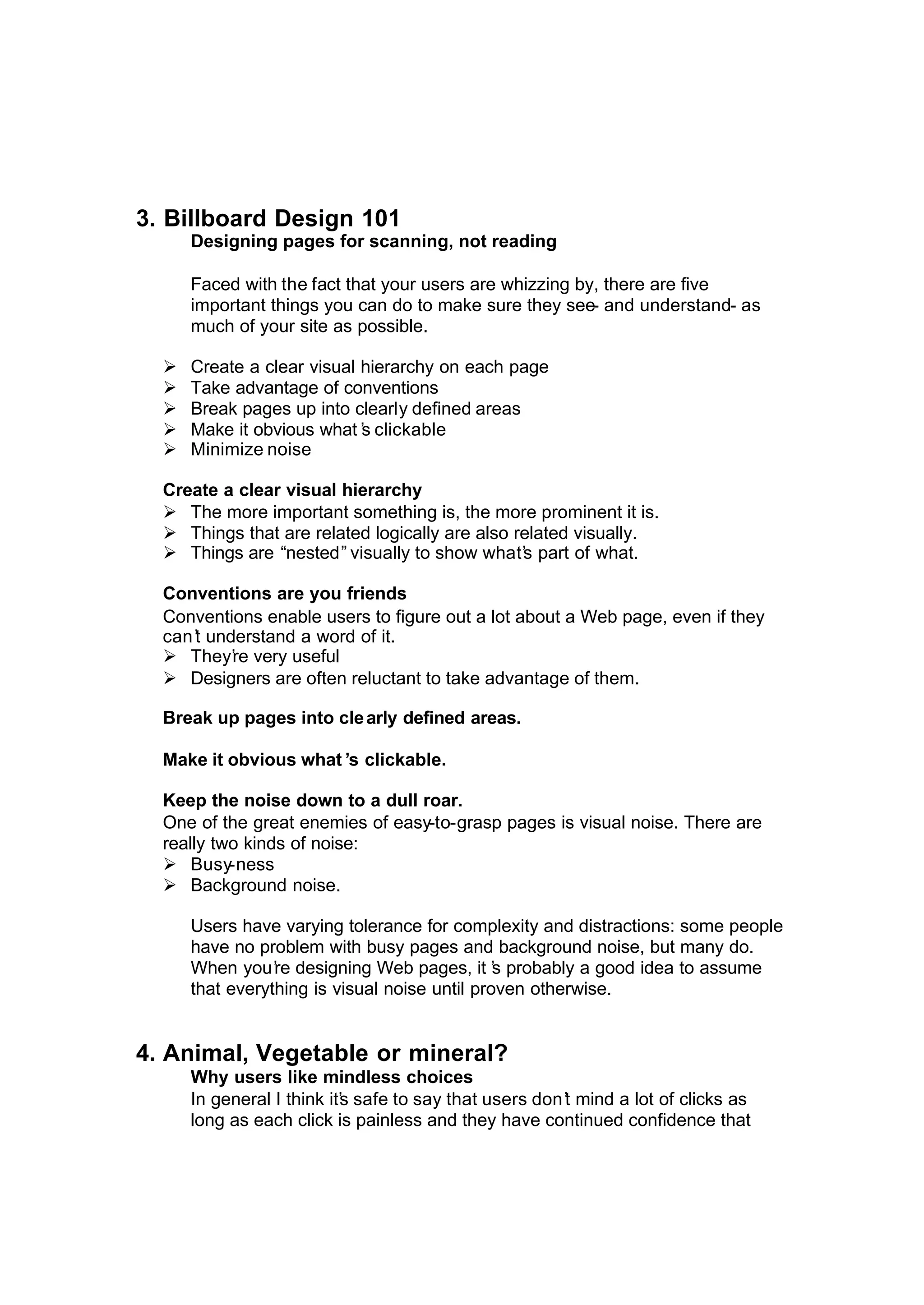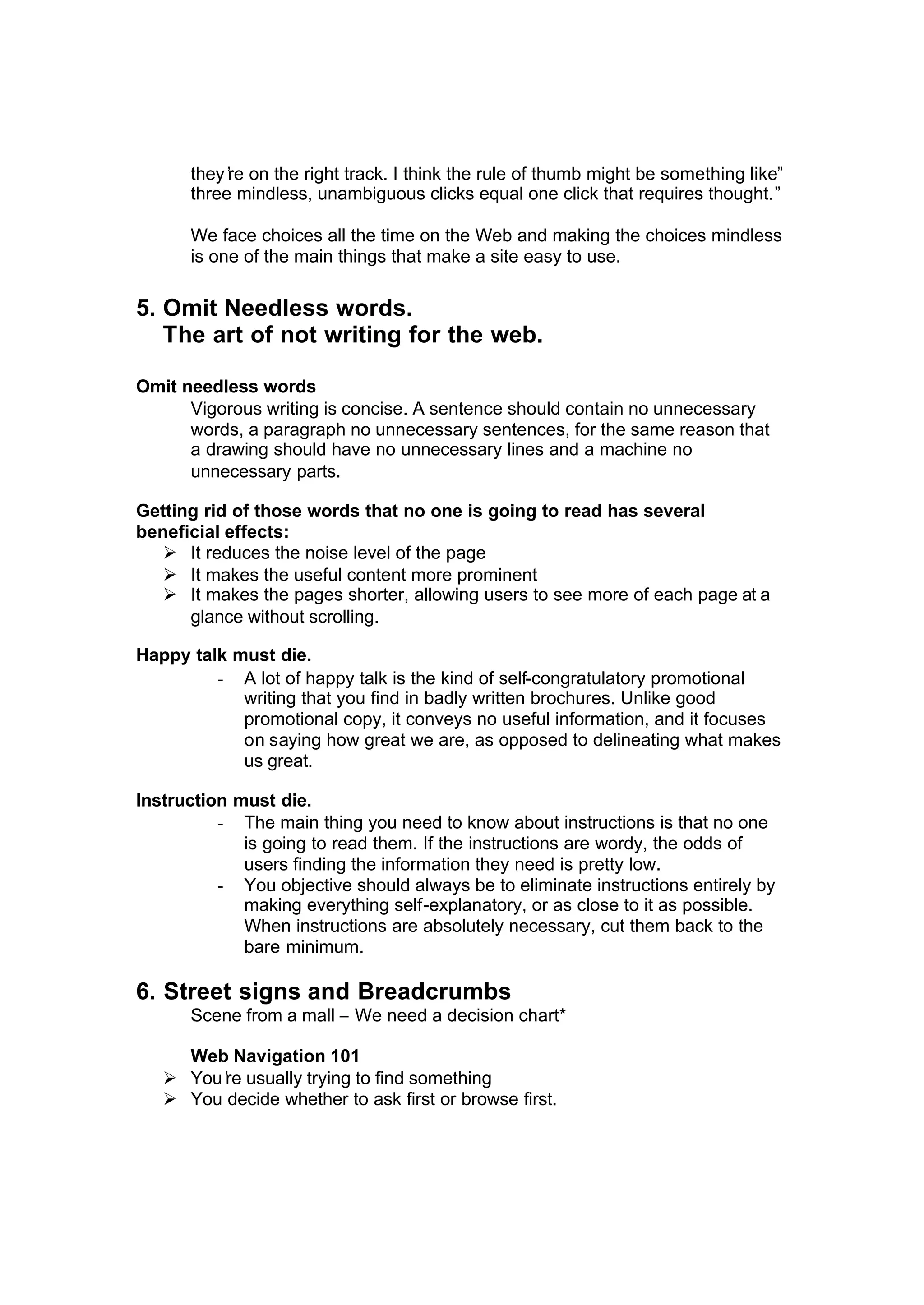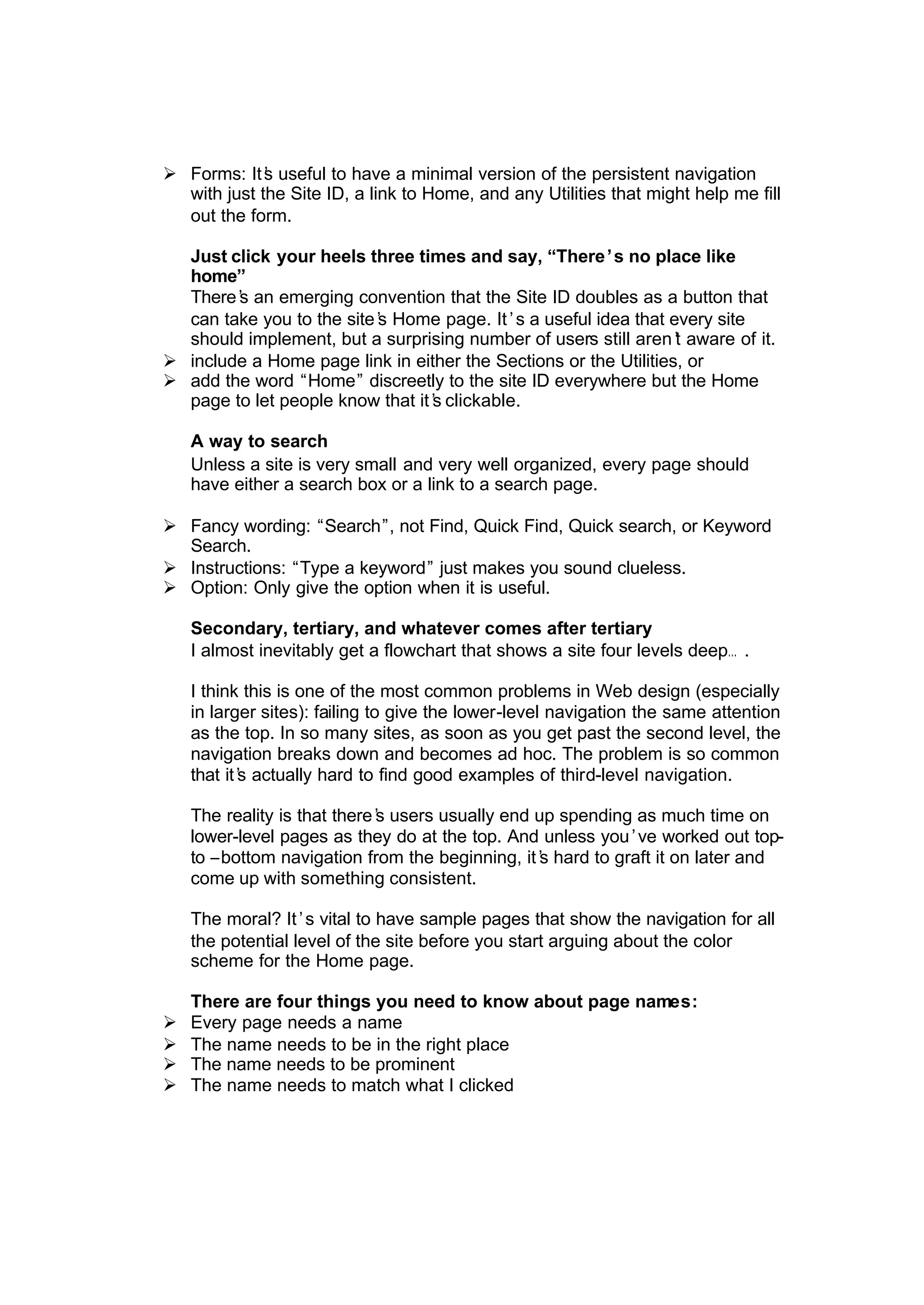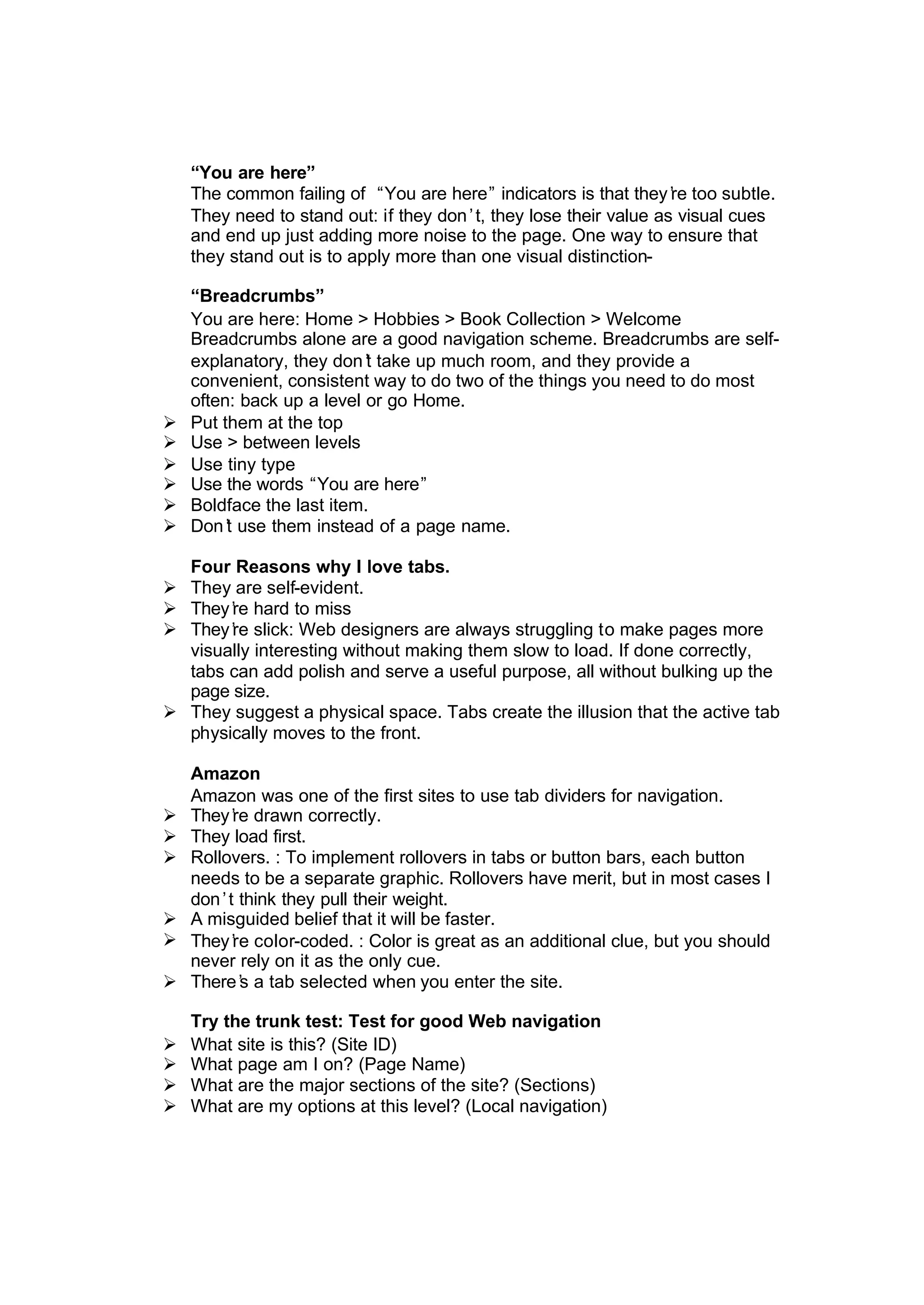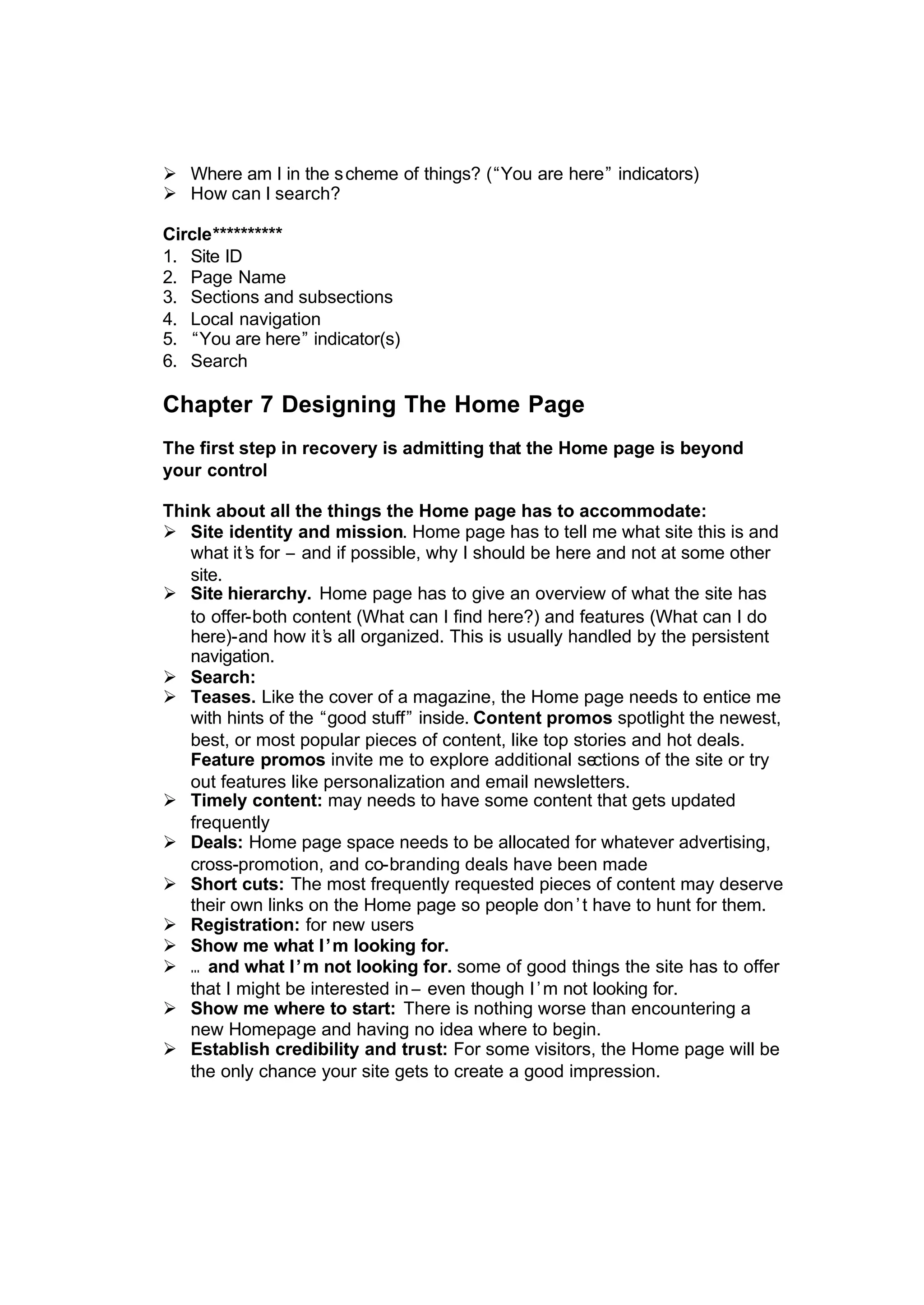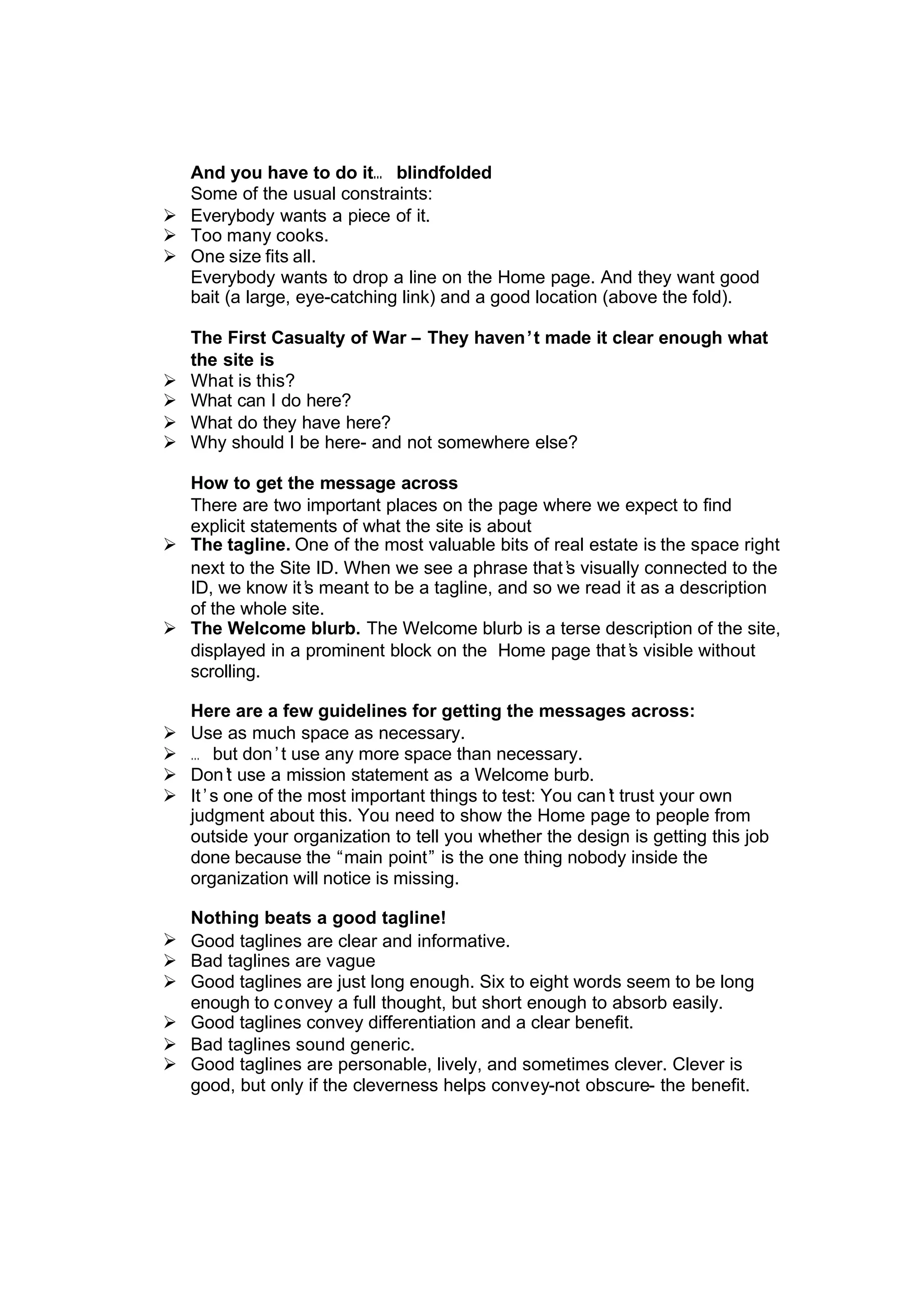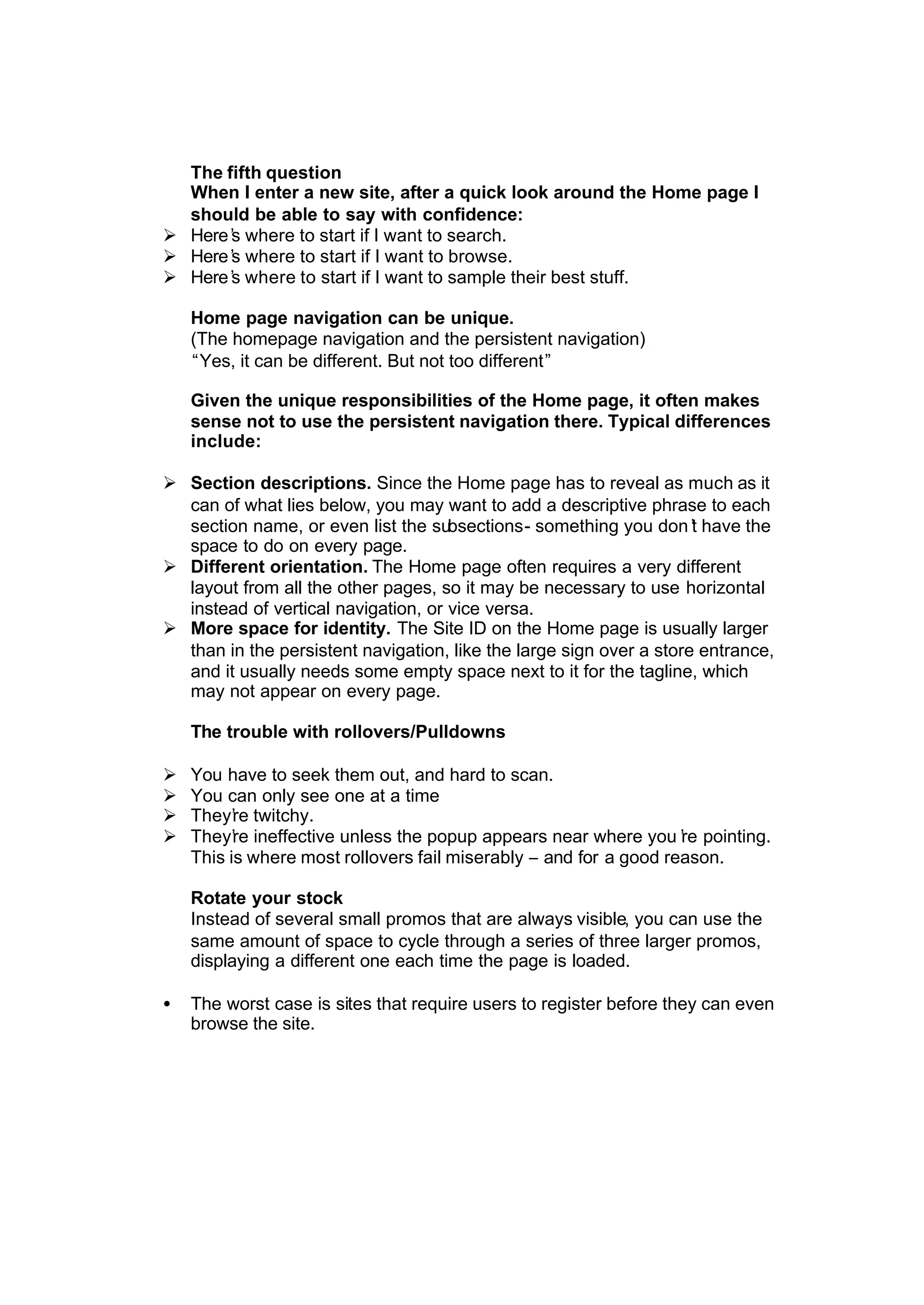Steve Krug's book emphasizes the importance of intuitive web design, urging that websites should require minimal thought from visitors to navigate effectively. Key strategies include creating clear visual hierarchies, using familiar conventions, reducing unnecessary content, and designing straightforward navigation. By understanding user behavior and preferences, designers can create streamlined experiences that enhance usability and engagement.
